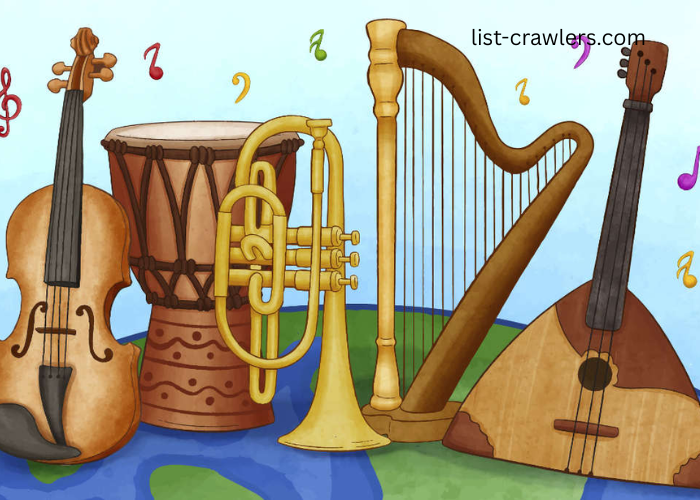Music transcends borders, language, and time. It is not just an art form or entertainment; it’s a powerful tool that helps define, preserve, and communicate cultural identity. Across generations and continents, communities have used music to tell stories, celebrate rituals, express values, and unify people. In a rapidly globalizing world, the role of music in shaping and reinforcing cultural identity has become more significant than ever.
Understanding Cultural Identity
Cultural identity refers to a sense of belonging to a particular group or culture. It includes language, traditions, values, customs, history, and shared symbols. Cultural identity gives individuals a grounding sense of self and community. While language and rituals often stand out as key components of culture, music plays a vital, often underestimated, role in expressing and preserving this identity.
The Universal Language of Music
Music is often referred to as the “universal language” because it communicates emotions and stories without the need for words. Rhythm, melody, and harmony can evoke feelings and memories in people from any background. However, the styles, instruments, lyrics, and scales used in music are often deeply rooted in a community’s unique history and traditions. This is where music becomes more than just sound—it becomes a symbol of cultural identity.
How Music Reflects Cultural Identity
Music reflects cultural identity in several ways:
- Lyrics and Language: Songs often include native languages, idioms, or dialects, helping preserve endangered or minority tongues.
- Instruments: Traditional instruments like the Indian sitar, Irish fiddle, African djembe, or Chinese guzheng carry cultural significance.
- Rituals and Ceremonies: Music plays a central role in weddings, funerals, religious ceremonies, and seasonal festivals, reinforcing cultural values.
- Storytelling: Folk songs and ballads often tell historical tales or mythological stories passed down through generations.
Music Across Different Cultures and explore all music
Let’s explore how various cultures use music to maintain their identity.
African Cultures
In many African societies, music is integral to daily life. Drumming, chanting, and dancing are used in rituals, storytelling, and community celebrations. Each tribe has its own musical traditions that teach history, social values, and spiritual beliefs.
Indigenous Cultures
Indigenous communities worldwide, such as Native American, Aboriginal Australian, and Inuit peoples, use music in sacred rituals and oral traditions. Songs are passed down through generations and often serve as a link to ancestors, the land, and spiritual beliefs.
Latin American Cultures
Music genres like salsa, tango, cumbia, and mariachi are rich with cultural expression in Latin America. They blend indigenous, African, and European influences, telling stories of struggle, celebration, and resilience.
Asian Cultures
In India, classical music systems like Hindustani and Carnatic are tied to spiritual and philosophical teachings. In East Asia, traditional music uses pentatonic scales and unique instrumentation to express harmony with nature and society.
Music and the Diaspora Experience
For migrant and diaspora communities, music can be a lifeline to their homeland. It helps individuals maintain a connection to their roots and share their culture with new generations born abroad. Through music, diaspora communities preserve traditions while blending them with new cultural influences.
Examples include:
- Caribbean reggae and calypso in the UK
- Indian classical fusion in the U.S.
- Afrobeat influencing global pop music
Music ecomes a space where cultural memory and innovation coexist, keeping identities alive and evolving.
The Role of Music in Education and Cultural Transmission
Music is an essential tool for teaching and preserving culture:
- In Schools: Cultural music programs expose students to different traditions and foster appreciation for diversity.
- Community Events: Cultural festivals and music performances showcase traditions to broader audiences.
- Digital Platforms: Platforms like YouTube, Spotify, and TikTok now allow traditional and modern cultural music to reach global audiences.
By learning and participating in traditional music, younger generations develop pride in their heritage, ensuring that traditions continue to thrive.
Music, Identity, and Resistance
Music has often been a form of resistance and a voice for marginalized communities. Protest songs, revolutionary anthems, and underground music movements express political dissent and cultural pride.
Some powerful examples include:
- The Civil Rights Movement in the U.S.: Songs like “We Shall Overcome” became anthems of hope and unity.
- South African Anti-Apartheid Movement: Musicians like Miriam Makeba used music to bring international awareness.
- Native American Resistance: Contemporary artists blend traditional instruments with hip-hop to address indigenous issues.
In these cases, music becomes not just a reflection of culture but a tool to assert identity, fight oppression, and demand recognition.
The Impact of Globalization on Cultural Music
Globalization has a double-edged effect on cultural music:
- Positive Impacts:
- Easier dissemination of traditional music
- Opportunities for cross-cultural collaboration
- Revitalization of fading musical forms
- Easier dissemination of traditional music
- Challenges:
- Homogenization of global music trends
- Commercialization of traditional music
- Loss of authenticity due to Western influences
- Homogenization of global music trends
However, many artists are creatively blending traditional and modern styles to keep their culture relevant while innovating musically.
Preserving Music Heritage in the Digital Age
Digital tools and archives now allow communities to document and preserve their musical heritage more effectively than ever before. Examples include:
- UNESCO’s Intangible Cultural Heritage list
- Ethnomusicology databases
- Community radio and podcast projects
- Social media platforms featuring cultural content
These resources help protect music traditions and promote them on a global scale, encouraging cultural pride and knowledge sharing.
FAQs: Music and Cultural Identity
1. How does music influence cultural identity?
Music influences cultural identity by reflecting a group’s traditions, values, and historical experiences. It reinforces a sense of belonging and helps individuals connect with their heritage and community.
2. Why is music important in cultural preservation?
Music serves as a living archive of a culture’s language, stories, rituals, and values. It helps pass down knowledge across generations and keeps traditions alive in the face of modernization and globalization.
3. Can music help integrate cultures?
Yes, music can act as a bridge between cultures. It allows people from different backgrounds to find common ground and appreciate one another’s heritage. Fusion genres are a prime example of cultural integration through music.
4. How do younger generations connect with traditional music?
Young people connect with traditional music through family traditions, education, festivals, and online platforms. Many also remix or blend traditional styles with modern genres like pop or hip-hop to keep the music relevant.
5. Are there risks to cultural identity when music is globalized?
While globalization allows for broader exposure, it can also dilute or commercialize cultural music. The key is finding a balance that honors authenticity while embracing innovation.
Conclusion
Music is a powerful cultural tool that transcends mere entertainment. It carries deep meaning, history, and identity. Whether through traditional folk songs or modern cultural fusions, music continues to be a vital force in shaping how individuals and communities see themselves and are seen by others.
As we move further into a connected world, honoring and preserving cultural music becomes not just an act of nostalgia but a necessary step in keeping the world’s cultural diversity alive. Music, in all its forms, is both a mirror and a bridge—reflecting where we come from and connecting us to others in ways words often cannot.







